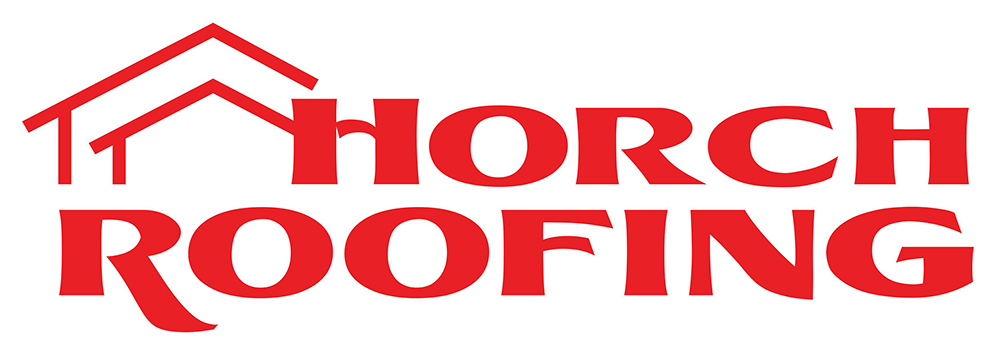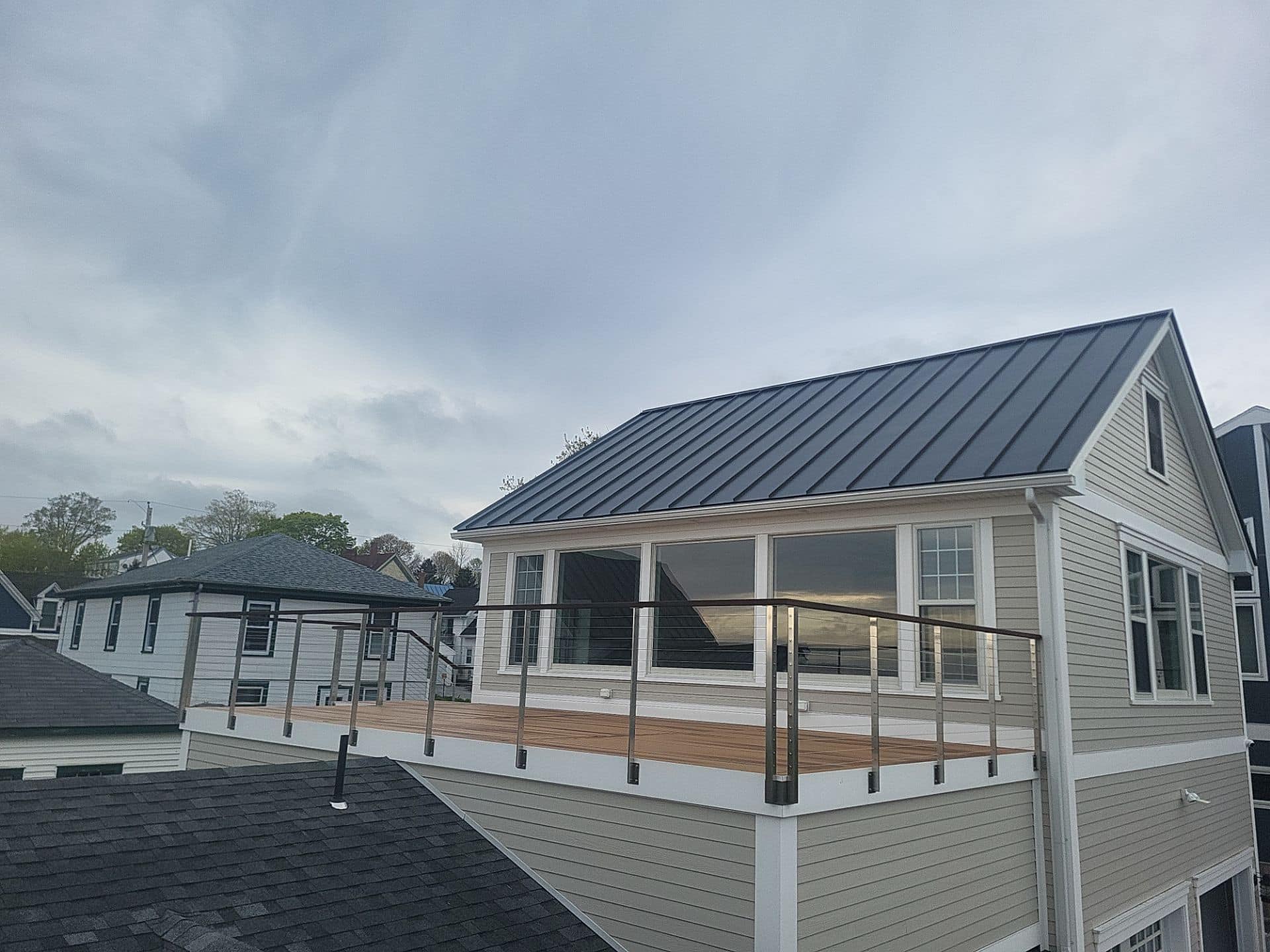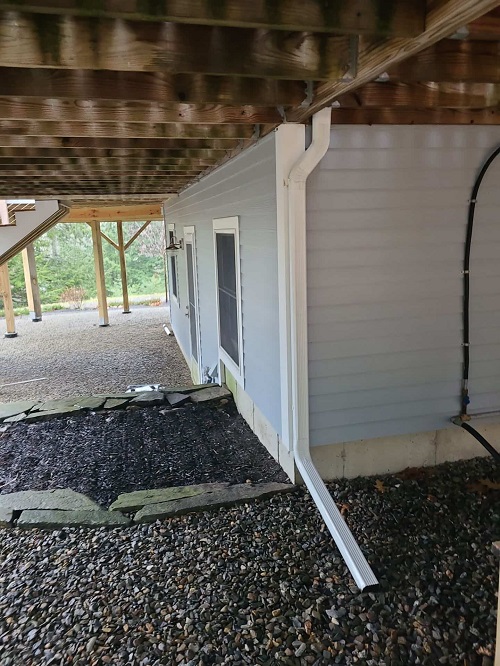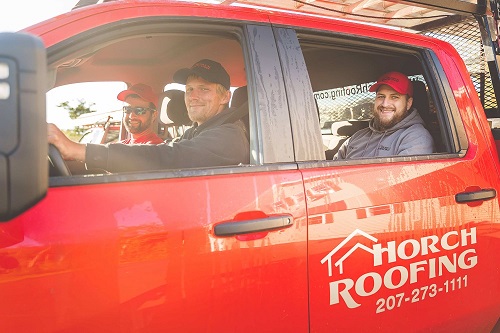- Roof design impacts airflow, daylight, sound, and indoor comfort.
- Pitch affects runoff, sun exposure, wind, and ease of upkeep.
- Openings like skylights, vents, and chimneys influence drafts and leaks.
- Materials shape heat, moisture, energy use, and ventilation.
- Full roofing systems work together to stabilize comfort year-round.
When considering home comfort, most people focus on insulation or windows. Yet the roofing system overhead can have just as much of an influence. It impacts how cool bedrooms stay in summer, how steady indoor temperatures feel during winter, and whether attics or vaulted ceilings can be used comfortably.
That’s precisely why many homeowners in Rockland consult roofing companies before committing to new installations. But how exactly do roof design and material choices shape interior comfort? Keep reading to find out!
How does a roof form affect the interior space?
Among many things that have an impact on your roof’s lifespan, the roof’s design also influences interior comfort. Outline and angle shape airflow, temperature, daylight, and noise. Understanding how form works helps homeowners reduce drafts, stabilize ceilings, and improve livability year-round.
Shape
A structure’s shape plays a big role in weather defense. Basic forms manage rain and snow with less effort, while complex layouts need careful detailing to keep interiors stable.
- Massing and junctions: Fewer intersections lower the chance of air leakage and moisture buildup.
- Attic volume: No matter the shape of the roof, the attic space size will be affected by it. Larger spaces above act as a buffer between outdoor extremes and the rooms below.
- Snow behavior: Wide, simple planes release accumulation predictably, whereas complex shapes encourage ice buildup at the edges.
- Daylight strategy: Dormers increase natural light but bring seams that need precise sealing.
- Sound: Broad, uninterrupted planes tend to soften the impact of wind and rain indoors.
Pitch & slope
The angle of the surface affects both weather protection and indoor comfort. There are advantages and disadvantages of both steeper slopes and flatter designs, but a standard roof pitch usually works best for clearing runoff and keeping all areas dry.
- Runoff and drying: Water leaves faster on high angles, while flat and low-slope surfaces demand flawless detailing to avoid leaks.
- Sun exposure: Orientation and angle can raise or reduce attic temperatures, especially in summer.
- Wind interaction: Certain slopes resist uplift and cut down on draft-inducing pressure differences.
- Access and upkeep: Gentle slopes make maintenance easier, which indirectly protects long-term comfort.
Penetration points
Every opening in the exterior surface can affect comfort inside. Leaks are among the most common roofing issues, and poorly installed or insulated penetration points not only make them more likely but can also create drafts and increase heat loss.
- Skylights: Good glazing increases daylight with minimal heat loss, while low-quality units invite condensation.
- Chimneys: Insulated chases prevent cold drafts from sinking into living areas.
- Vents and boots: Long-lasting seals reduce the risk of humidity reaching ceilings or odors moving inside.
- Air and vapor control: A continuous barrier around each opening stops leaks that make the upper floors uncomfortable.
Other
Elements like eaves and soffits mark the transition between exterior climate and interior conditions. Done well, they protect outside walls from dampness and help attic airflow stay consistent.
- Wall protection: Extended eaves keep water off siding, which cuts down on indoor moisture near outer walls.
- Soffit intake: Clear paths allow ridge exhaust to pull air through, which reduces hot or cold spots upstairs.
- Seasonal shading: Overhangs limit excess summer heat without blocking winter light.
- Water management: Paired with gutters, they move runoff cleanly away from the building.
What is the role of roofing material on home’s comfort?
Your choice of covering shapes how the structure handles heat, moisture, and airflow. The best new roofing materials, including asphalt shingles, standing-seam metal, and EPDM rubber, each influence comfort in different ways. True comfort, however, always comes from the entire system working together: underlayment, insulation, and ventilation work together with the exterior covering to define what residents feel indoors.
Temperature stability
It’s no secret that long winters and the sun’s glare in the summer test all systems in the region. Because weather conditions heavily impact your roof, material choice directly affects how stable indoor spaces feel throughout the year. For example, standard asphalt shingles and EPDM membranes in dark colors both absorb heat, which is why they’re paired with exterior insulation. Standing-seam metal, however, reflects much of the sun’s energy, so metal roof temperature often runs lower than expected.
Energy efficiency
The comfort of your home’s interiors can also show up in utility bills. Cool roof coatings are an excellent solution for the summer, when they help turn the sun’s heat away from any structures below deck. Even if it’s not officially a cool roof, an average new system today will come with strong insulation that prevents standard issues like surface melt, temperature fluctuations, straining the HVAC system, or higher utility bills. In all cases, energy efficiency comes from the way materials and supporting layers work together.
Ventilation & airflow
Air circulation is necessary to keep indoor conditions consistent. Steep-slope assemblies covered with shingles or metal often rely on ridge-and-soffit ventilation, which pulls heat and humidity out of the attic and, as a result, prevents ice dams and helps ceilings track room temperature more closely. Low-slope EPDM sections, by contrast, usually depend on airtight ceilings and well-sealed ductwork for kitchens and baths. Although the strategies differ, each material can support steady airflow when the system is designed with care.
Usable living space
The choice of roofing also affects how spaces feel and function. Shingles and standing-seam panels typically cover pitched surfaces, with vented attics that double as storage and buffer zones above living areas. Metal often tops vaulted designs, where it keeps ceilings comfortable, while EPDM suits low-pitched additions and dormers, where compact solutions and weather protection matter more than storage. In the end, the most comfortable setup is the one that supports the intended use of the rooms below.
What’s Rockland’s preferred choice among roofing companies?
Horch Roofing stands out for expert craftsmanship and a commitment to keeping homes in Rockland and throughout Maine safe and comfortable. From precise roof and seamless gutter installations or replacements with high-quality materials to responsive repair and dispatch services, we’re at your service no matter what you need.
Our material selection is tailored to local weather, so whether you’re investing in asphalt shingles for dependable value, standing-seam metal for longevity, or EPDM rubber for low-slope coverage, we’re your go-to team. Reach out now and let’s start planning your next project!



